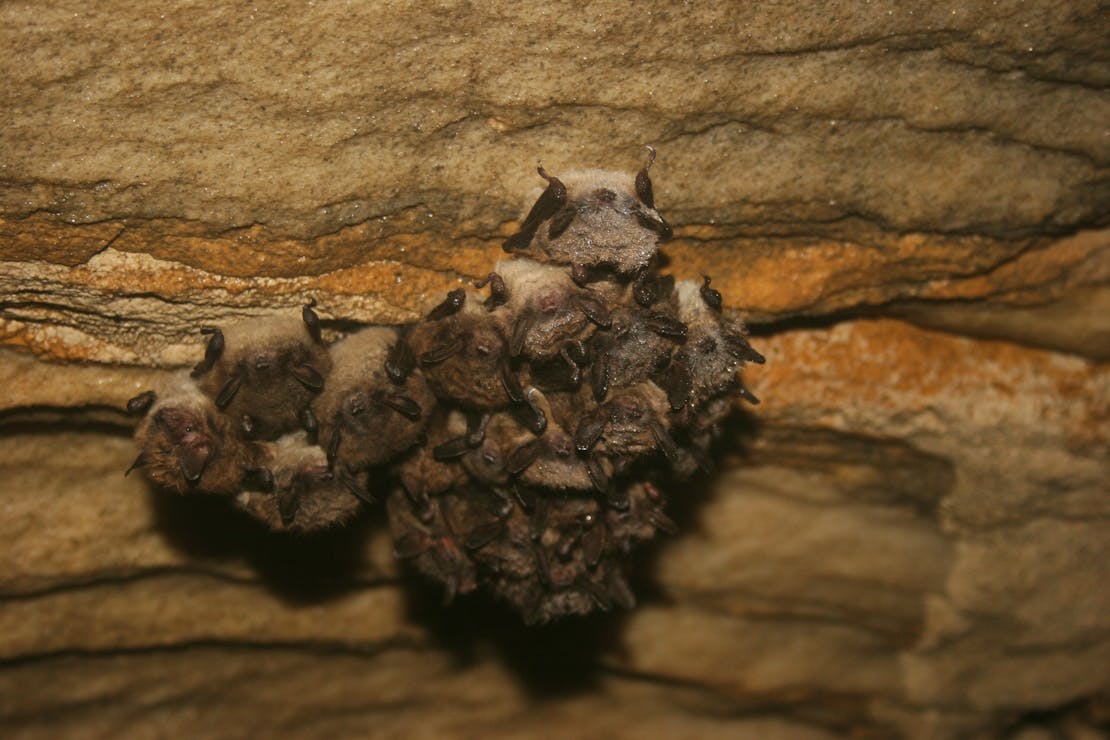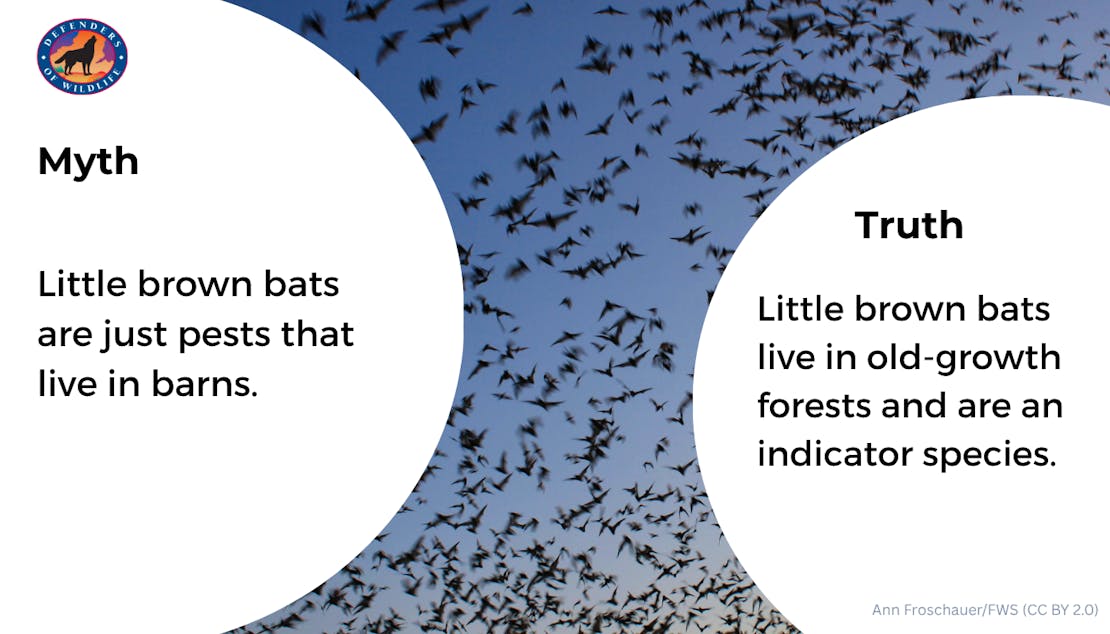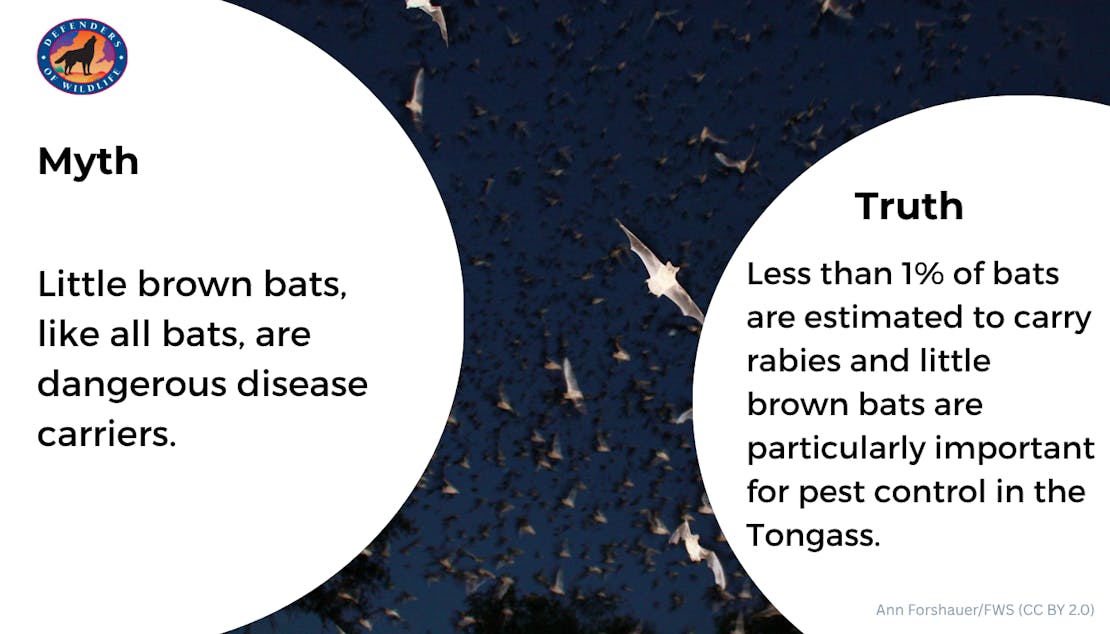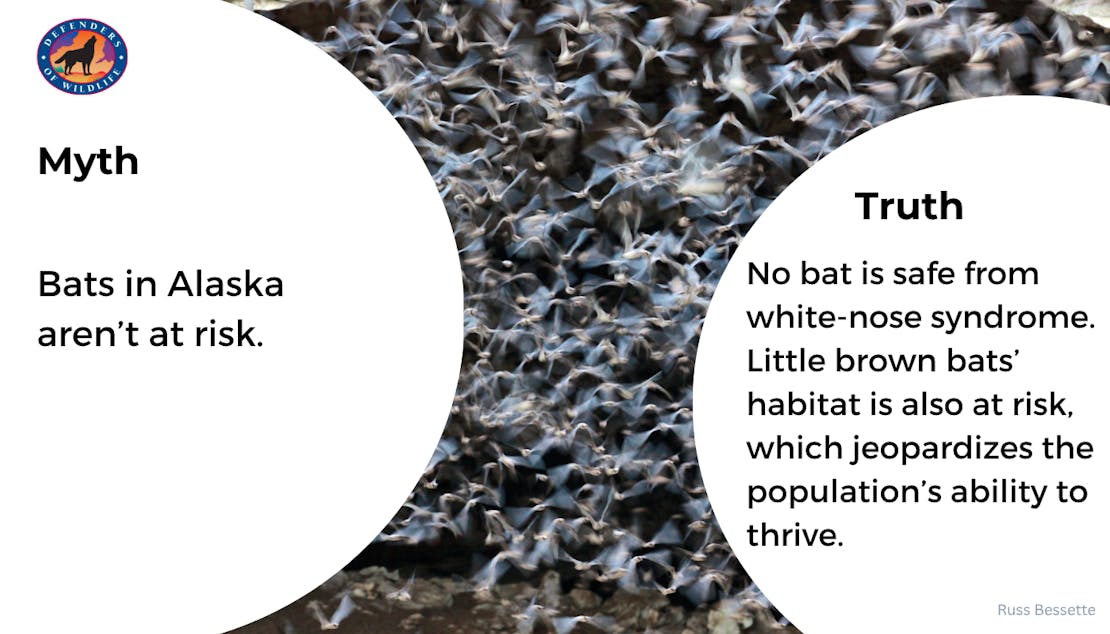This blog was written by Defenders of Wildlife Alaska Intern, Sebastien Comtois.
Covering most of Southeast Alaska at nearly 17 million acres the Tongass National Forest is the largest national forest in the United States, among the largest remaining temperate rainforests in the world, encompassing alpine meadows, deep fjords, calving glaciers, dense old‐growth rainforest, islands and islets. The animals are as versatile as the landscape.
Brown and black bears fish for salmon and forage for berries. Sitka black-tailed deer and moose browse the vegetation, and bald eagles soar among the trees. At night, you might spot a different winged animal swooping down: little brown bats (Myotis lucifugus), eating large amounts of pesky mosquitoes for which the area is also renowned.
Despite efforts to dispel misinformation around bats, however, there are still a lot of batty tales out there. So, hang out with us as we fly into the truth and learn some not-so-scary facts about little brown bats!
1. Fact: Little brown bats are one of seven bat species in Alaska.
There are plenty of bats in Alaska, but they are mostly awake while you sleep.
At first glance, it might seem like bats are uncommon in Alaska. After all, they’re nocturnal, small and don’t call attention to themselves. But Alaska is home to seven species of bats, with the little brown bat being the most common. In fact, little brown bats are the only bats found in Southcentral, Interior and Western Alaska. They are also the most abundant bat in the Tongass National Forest.
Little brown bats occupy a wide range of habitats, from coastal forests to alpine meadows, and even near towns and development. They’ve also adapted to northern life in specific ways, such as taking advantage of extended twilight hours to eat during the summer.
If you’re ever near the forest edge at dusk, especially near a pond or stream, look up! You might just catch the gymnastic flight of a bat hunting insects in the low light.
2. Fact: Little brown bats are important forest-dwelling wildlife
While bats sometimes roost in barns or attics, most little brown bats live in wild places like the Tongass. In this lush rainforest, these small, nimble mammals are at home in the natural nooks and crannies that abound. They rely on old-growth trees with peeling bark, hollow trunks and standing snags to rest during the day and raise their young in summer maternity colonies. These natural structures provide shelter from predators and weather, especially during Alaska’s cold months.
Seeing bats as “just pests” twists their ecological role and downplays their importance as forest-dwelling wildlife. Little brown bats are considered an indicator species in the Tongass, meaning their presence reflects the health of the surrounding environment. They help maintain healthy insect populations and serve as prey for owls and other predators.
3. Fact: Little brown bats keep the Tongass’ insect populations in check.
Less than 1% of bats are estimated to carry rabies and little brown bats are particularly important for pest control in the Tongass.
Bats have long been the subject of ill-deserved fear, but the truth is, the risk of contracting a disease like rabies is extremely low, especially if you never touch one. Meanwhile, their natural benefits are enormous!
Little brown bats are natural pest control experts. A single bat is capable of eating up to 1,000 insects in just one hour! That’s hundreds of mosquitoes, moths, beetles and agricultural pests taken out of the air without a single drop of pesticide. In Southeast Alaska, that kind of insect control matters. The Tongass is jam-packed with aquatic insects, forest moths and biting flies. Bats play a key role in keeping all those populations in check. Their nightly foraging flights also help reduce insect-borne diseases and crop damage for communities living nearby.
Fact 4: While white-nose syndrome hasn’t been detected in Alaska, there are other threats to little brown bats.
White-nose fungus hasn’t been detected in Alaska, yet. So, it’s easy to assume little brown bats here are safe, but these bats are listed as endangered in Canada and have suffered population crashes with over 90% mortality across the Lower 48. With its remote location and intact habitats, the Tongass may serve as a future dwelling ground for this threatened species, but only if we continue to protect it.
Habitat loss, climate change and human disturbance are all creeping pressures that can erode the resilience of Tongass bat populations. Old-growth forests offer essential resting and hunting space, and the connections between habitats allow bats to access seasonal resources. Logging, roadbuilding and development threaten that balance. What’s more, little brown bats in Alaska may have fewer genetic defenses, due to geographic isolation, if white-nose syndrome arrives!
The good news is, we all can help protect these bats and the Tongass.
Rather than being feared, bats deserve to be celebrated for their quiet contributions to our ecosystems. Sharing real bat facts with friends and family might just earn you the best Halloween trivia of the season!
So, the next time you spot a bat darting through the twilight sky, remember it’s not a nuisance. It’s a nighttime guardian, helping to keep the ecosystem in balance while you sleep. Respect these remarkable animals by giving them space and letting them do what they do best. Why? Because, the truly frightening thing is a world without bats.














